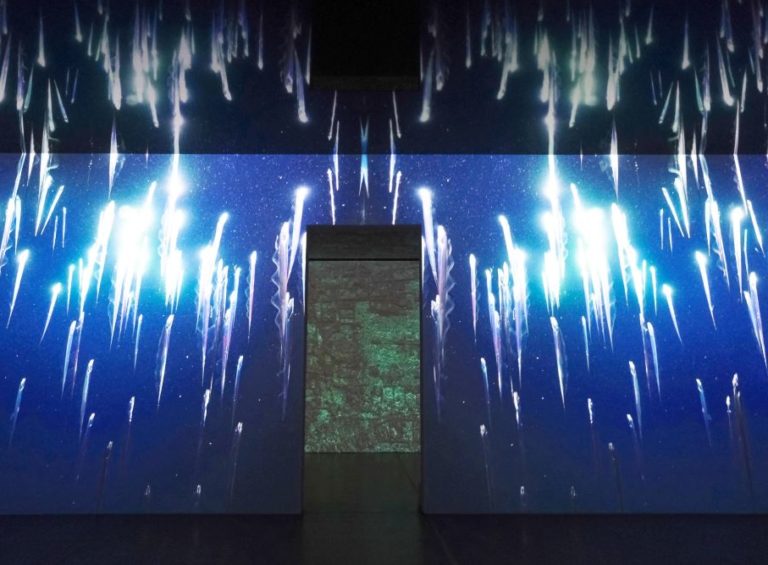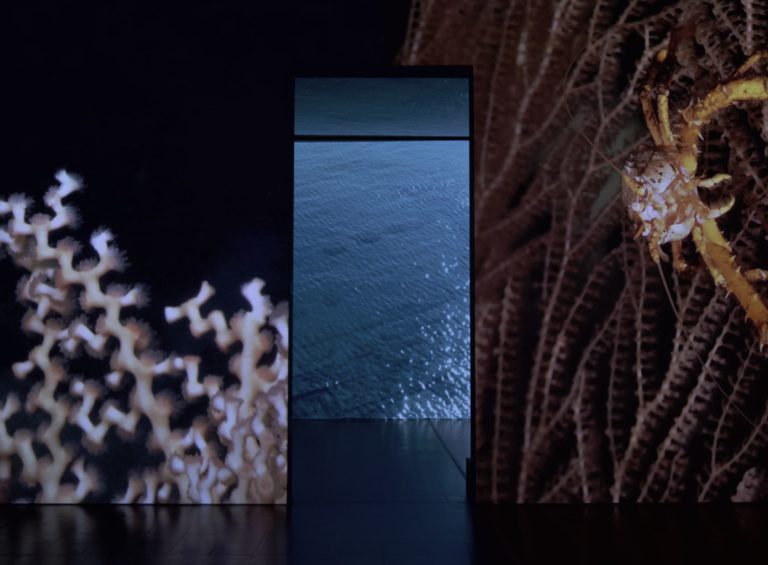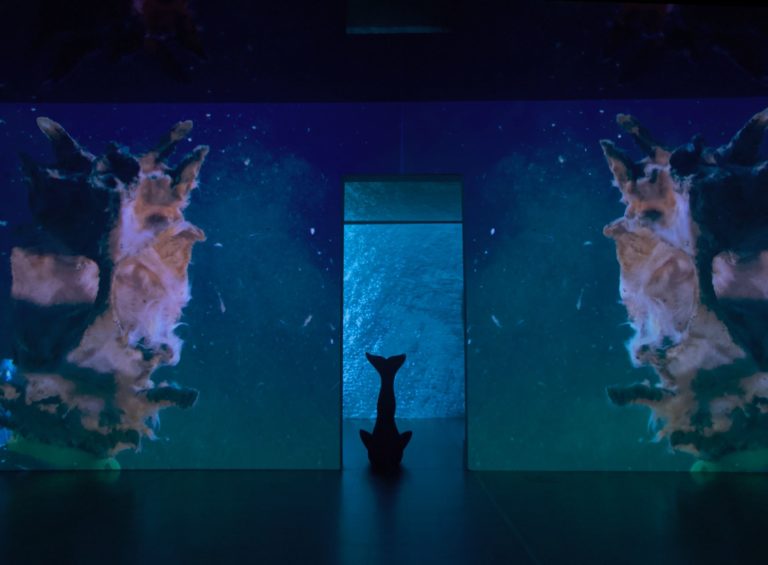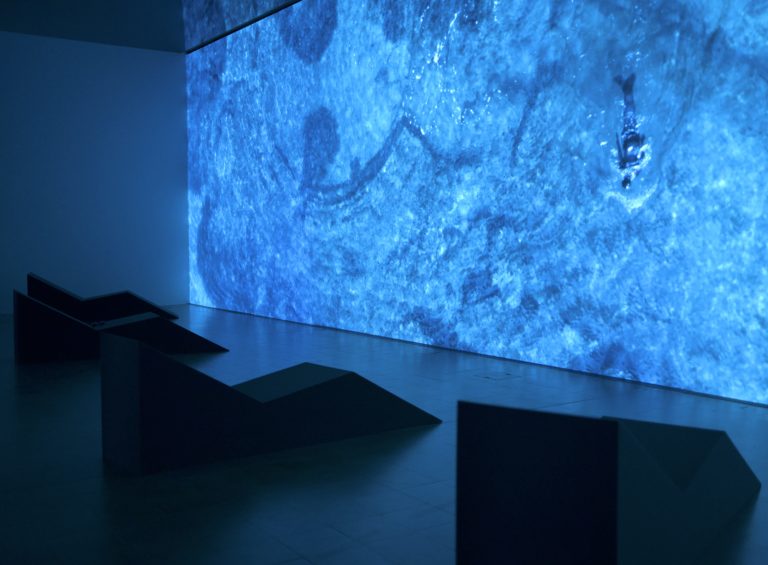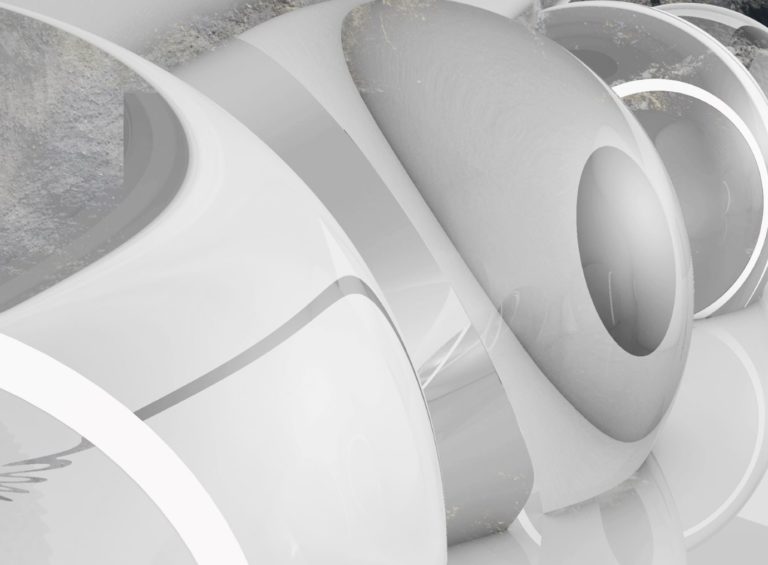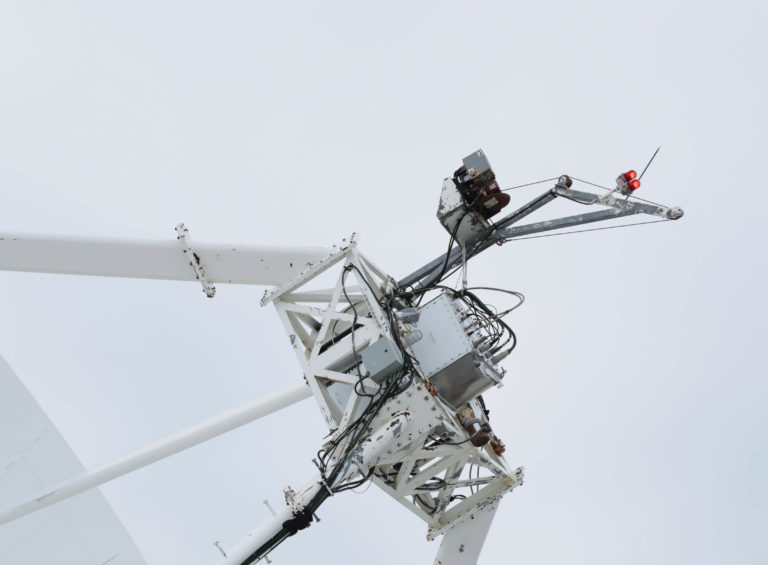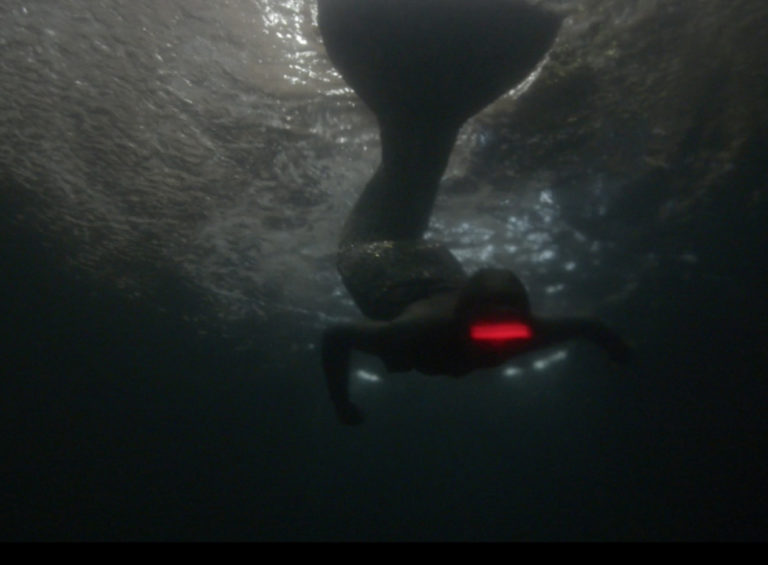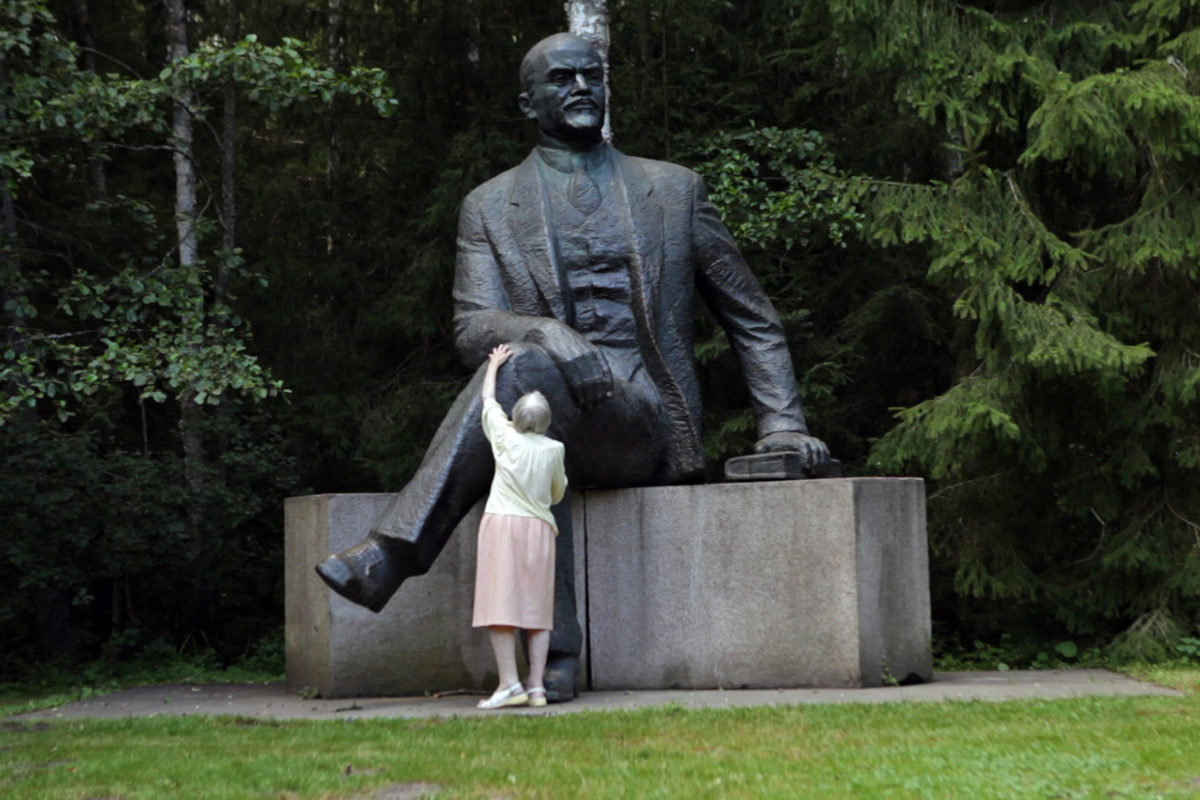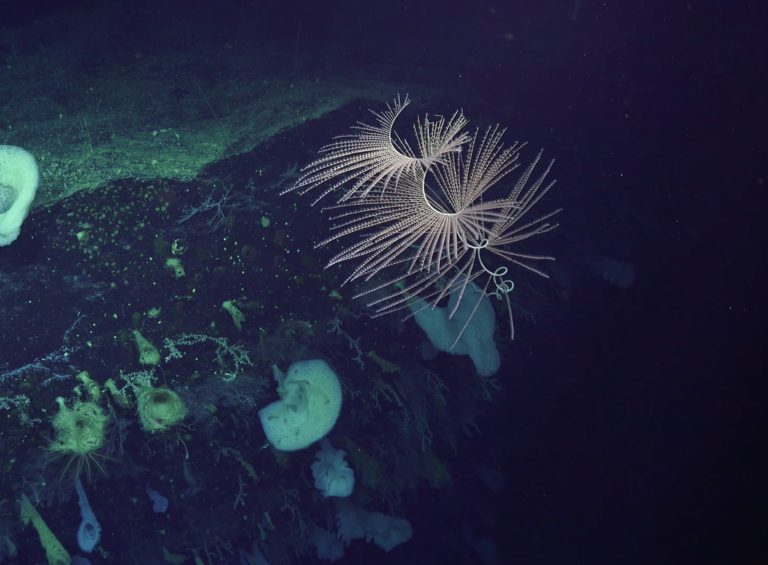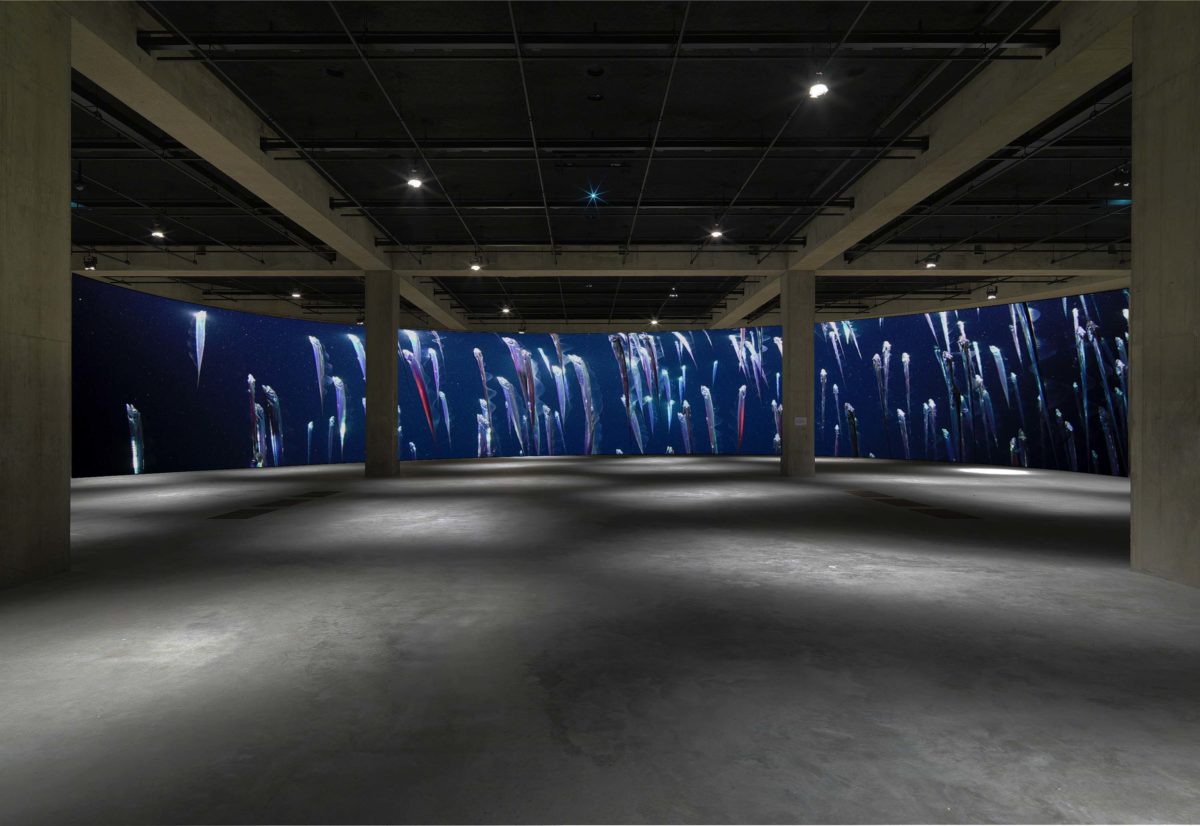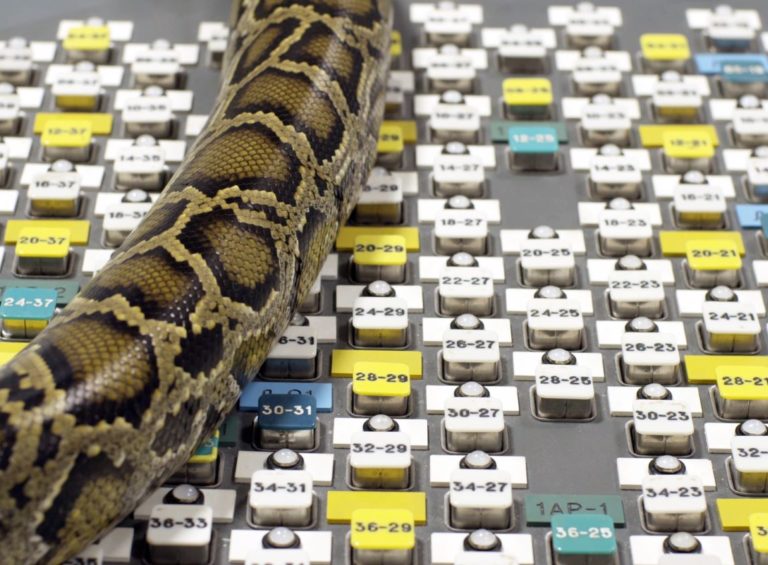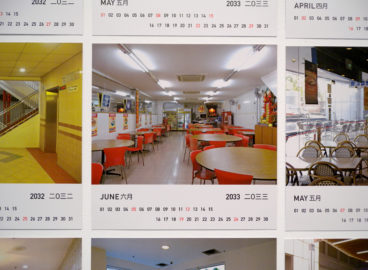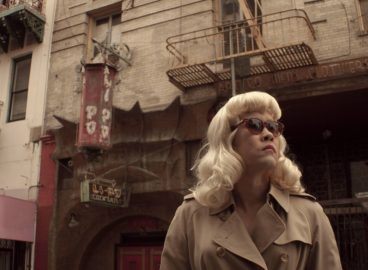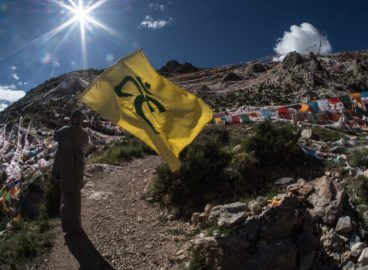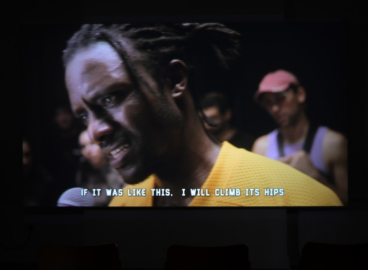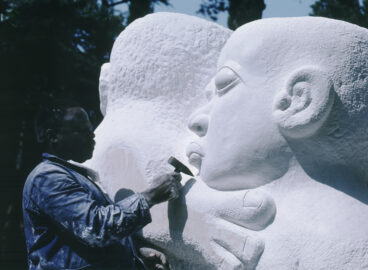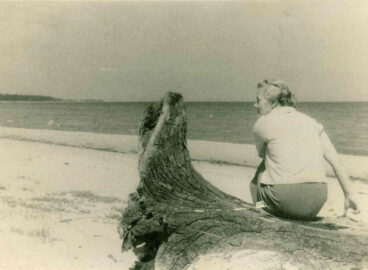This conversation between the artist Emilija Škarnulytė, Associate Curator, Department of Film at MoMA, Sophie Cavoulacos, and Curator, International Art at Tate Modern, Valentine Umansky, took place in late September. It focuses on two of Škarnulytė‘s upcoming projects: An Evening with Emilija Škarnulytė, which is currently streaming online as part of MoMA’s Virtual Cinema series, and a presentation at Tate Modern comprising a new video-installation by Škarnulytė along with two previous works by the artist and New Mineral Collective (Emilija Škarnulytė & Tanya Busse). These efforts echo one another thematically as well as overlap in time.
Škarnulytė’s MoMA presentation centers on the last ten years of her practice, featuring short films that foreground the interrelations between contemporary political issues and ecology, between human and nonhuman worlds. Her work at Tate Modern is presented as part of Power to Change, a program of art events in the run-up to the COP26 summit. It features the films Pleasure Prospects and Sirenomelia alongside a new project Eternal Return, which, installed at the South Tank, explores the ecological ramifications of and technologies related to deep-sea mining and ocean mapping.
The conversation began with a discussion of the intersection of filmic and architectural spaces in Emilija’s work. Taking her latest solo exhibition at Kunsthaus Pasquart as a starting point, it went on to examine different collaborations and the importance of ongoing dialogue spanning multiple scientific and artistic disciplines and developing through manifold projects. Even though her projects often touch upon the pervasive consequences of extractive capitalism, Cold War military and industrial histories, brought to the fore via micro and macro scales, Emilija counters if not reverses those narratives through poetry, playfulness, and desire.
Sophie Cavoulacos: You study place and space in such wide-ranging ways, and that engagement is echoed in how you envision your moving-image works in gallery installations. You recently had a show at Kunsthaus Pasquart in Switzerland, and we had a chance to look at the video documentation together, which makes me curious to ask you about that aspect of your process.
Emilija Škarnulytė: By way of introduction, I studied sculpture at the Brera Academy in Milan, and I think about ways to merge sculpture and film, approaching the film medium and form more like clay—that is, trying to shape it. In recent years, I have been working site-specifically in the research and production of films, but also in how they’re shown.
It’s always important to me how a narrative is created in space. For a film talking about, let’s say, Cold War mythologies, how does the subject flow in the space? I bring that question to every new piece and show, and in this recent show in Switzerland, I tried to gather different works into one immersive experience, into a kind of walk-through, hypnotic journey.
SC: Interacting with the architecture, from doors to ceilings to seating guiding the movement of the body through space in a way that seems both enchanting and dizzying—we were talking about the feeling of losing the ground beneath you.
ES: Yeah. The show opens with a text by Quinn Latimer—I thought I’d read a few lines:
Hold your breath. Drop. Dive. Open your eyes. Leave your body at the surface. You are now all eye, like a drill; all tail, like a fish. What are you trying to extract, to mine from your cool liquid entry? You pass, cool as a camera with your lens of language, through dry corridors of nuclear seas, liquid hallways of sunken cities, strange scaffolding of deep-sea mining, sculptural figures of destroyed empires. . . .
I’ve been filming in an ancient Roman city that is now under water due to seismic activity in the Mediterranean, and editing footage from the seabed of the Gulf of Mexico, where laboratory-bred corals are used to restore the ecosystems damaged in consecutive oil spills, as part of my ongoing research on nuclear waste and burial sites. In the show at Kunsthaus Pasquart, those ideas were embodied in custom-made architectural seating inspired by Etruscan tombs, and in the design, which activates the ceiling through projection—this liquid oil seemingly floating overhead. I’m interested in warping the space and in trying to open up these tunnels for different mental journeys.
The show brings together works I made over several years. I was trying to connect and find the dialogue between them, to bring them together in one place. The grandmother blinded from Chernobyl disaster, a Burmese python following and guiding us through nuclear power plants, a musician from the Sun Ra Arkestra journeying in the Negev Desert, and more characters guiding us through those sites. So while in the gallery space, one can maybe be in all those other sites, too.
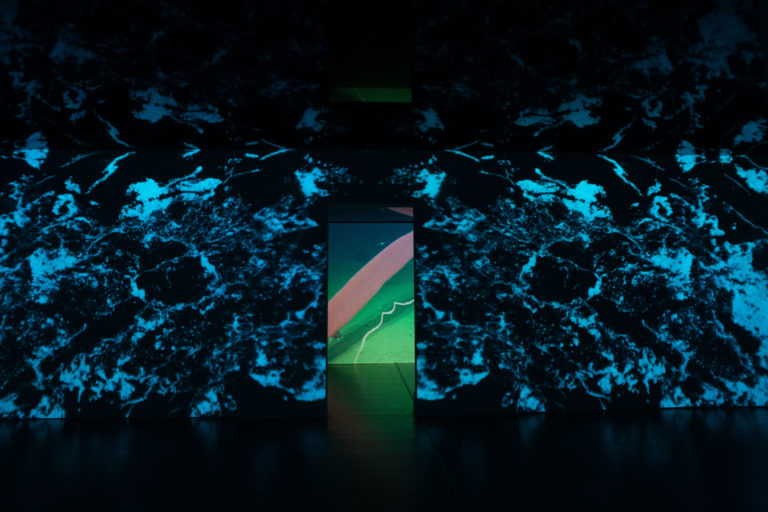
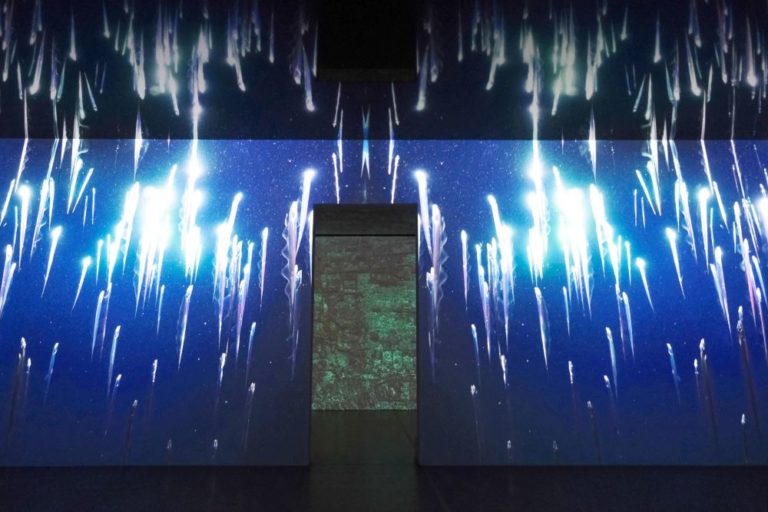
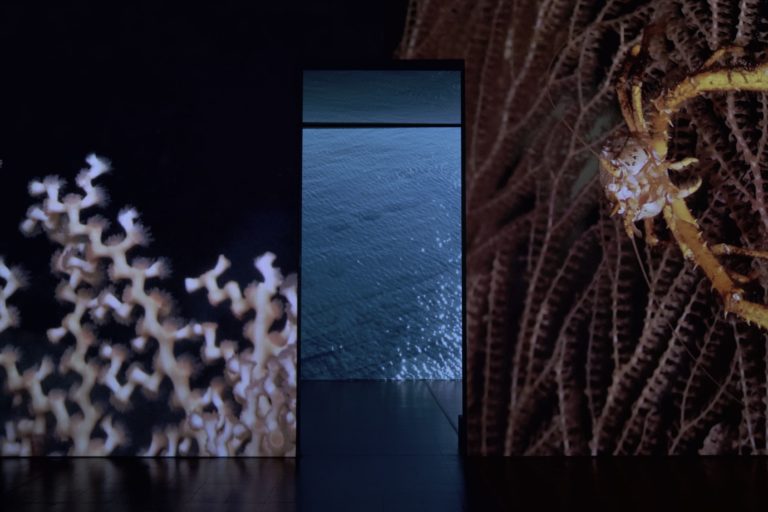
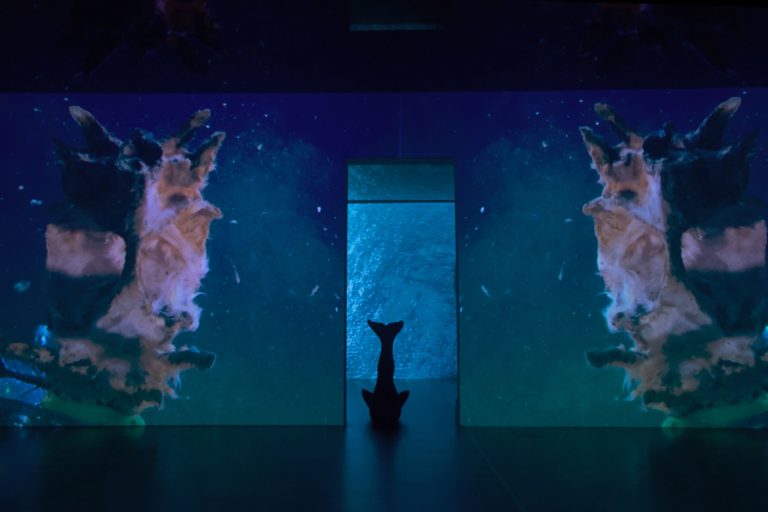
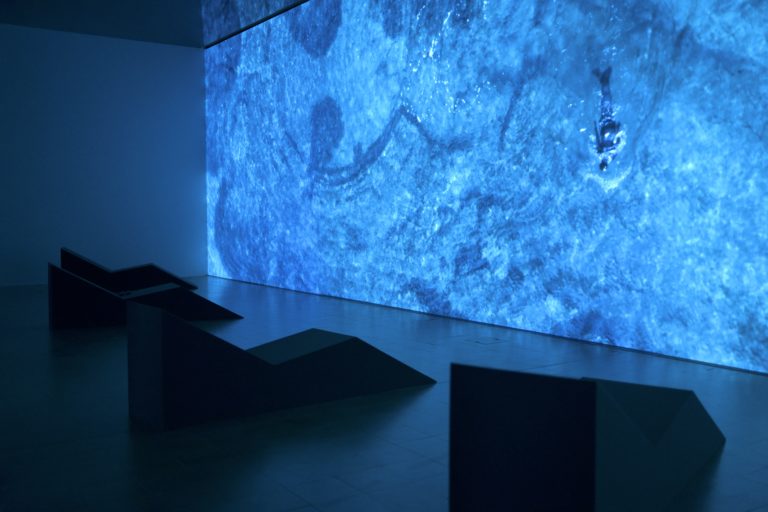
Valentine Umansky: That makes me think of our conversations about Aleksandra Kasuba (American, born Lithuania, 1923–2019), who you’ve cited as an influential figure, mentioning, of course, her role as an architect—a utopian architect even—but also, how avant-garde she was. You referred to her conception of the world as having no edges. In a sense, your mirrored ceiling installations seem to relate to that: a way of channeling Kasuba’s concept of the world having no edges. The idea of continuity also informs the video-installation that you have conceived for the Tanks at Tate Modern, which is a looped video work, right?
ES: Yes. Thank you for noticing. I think it’s a good transition to discuss Kasuba’s influence on my work in the context of what we’ve been talking about. Actually, my mother is an architect, so I grew up with those ideas around me, and I saw how hard she worked. And I was like, “I never want to be an architect.” But sometimes, I see, with installations, I end up being just that!
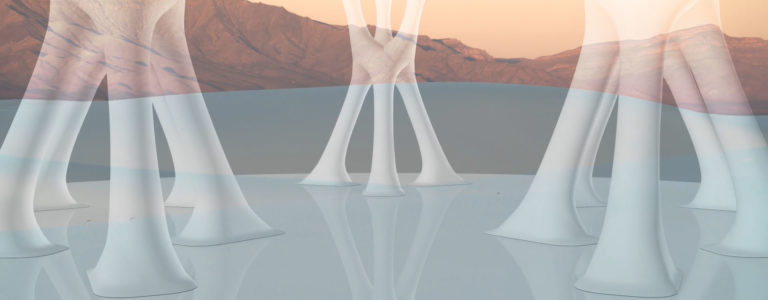
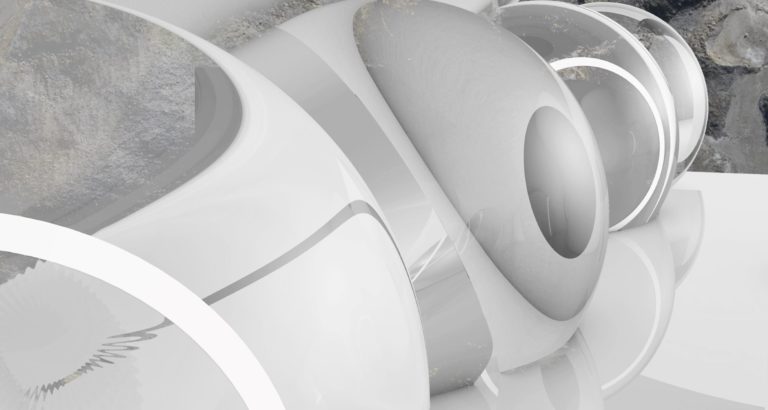
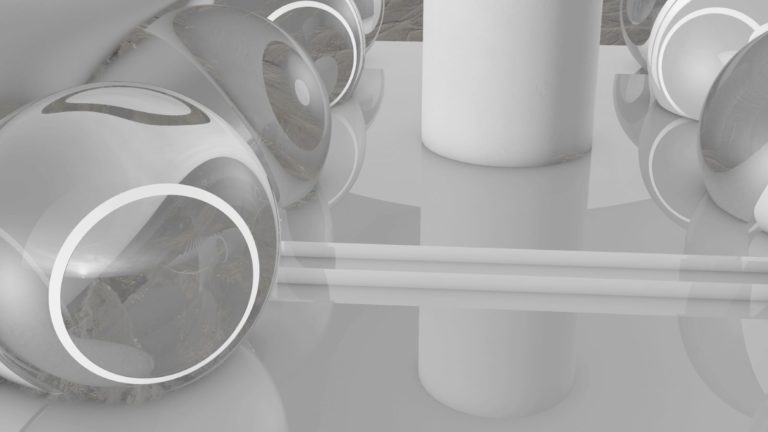
My mother’s dream was to meet Aleksandra Kasuba. And while I was traveling in New Mexico, she was like, “You have to meet Aleksandra Kasuba,” and so sent me her coordinates. And we met, and though we had sixty years difference between us, she was one of the most important, the most crucial artists, visionaries, architects, sculptors that I have met. And we just talked for days. I went back to New Mexico several times to meet with her before she passed away.
Kasuba’s ideas and legacy are at the core of my recent exhibition at the National Gallery of Art in Lithuania, Circular Time. For Aleksandra Kasuba. I wanted to enlarge her models and collages for visionary projects into portals that we could almost climb into and fly away in.
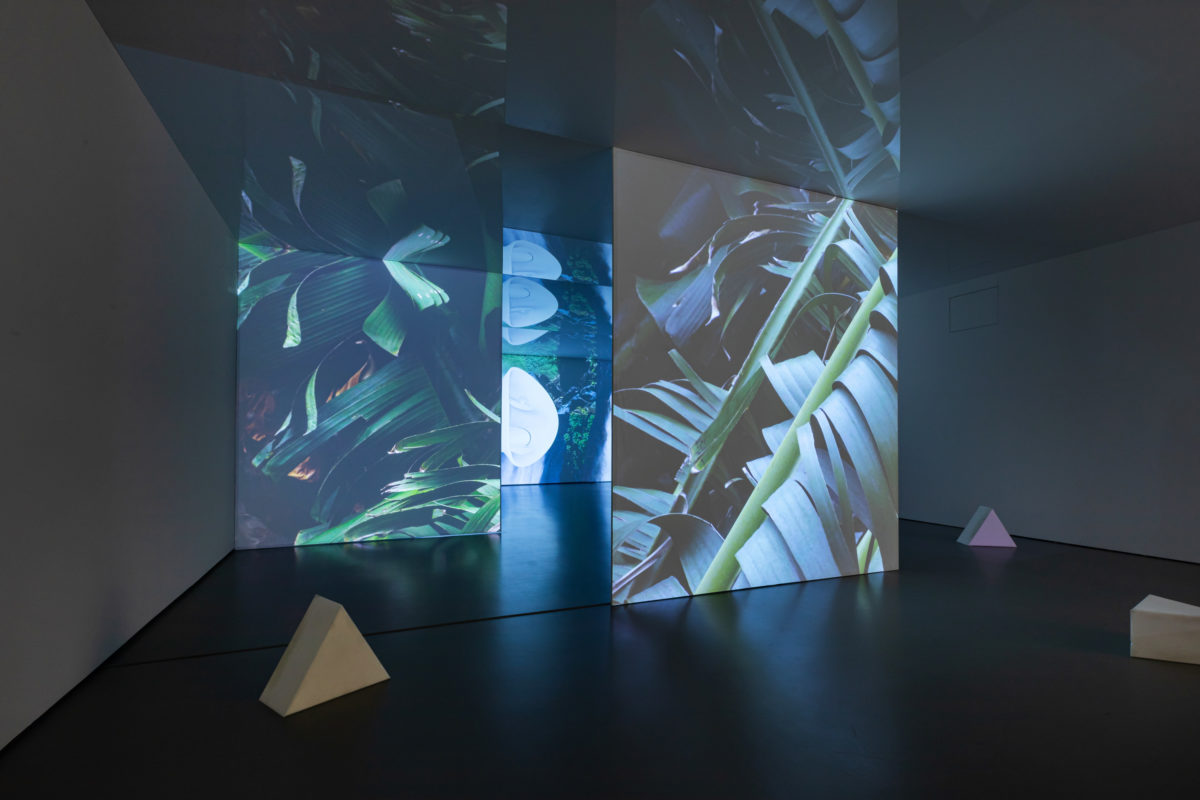
SC: That’s such a beautiful image! It brings to mind another aspect of your work, which is scale. It’s maybe particular to how you combine art and science, human and post-human—dealing with the microscopic but also behemoth technologies and industries like CERN (European Organization for Nuclear Research). But those subatomic particles take on maximalist proportions as well as graphic qualities.
ES: Yes, I think of measurement and scale a lot. Both are very important to me. Measuring the world, measuring history, measuring time, measuring the decaying time of atoms, measuring—but with what reference point? I am fascinated by that question and choose different reference points and orders of magnitude, whether it’s the human body or something else. I’m thinking of Sirenomelia, and the moment I’m lounging in a NATO submarine base underwater. I’m thinking about hidden structures and the scale or sounds of dying quasars. It’s also that those sounds have been used to measure Earth’s rotation and plate tectonics, and so to help us understand our own existence and decay.
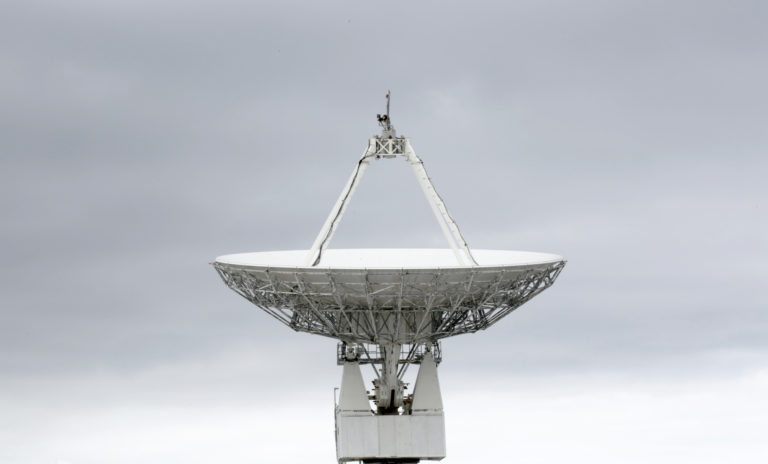
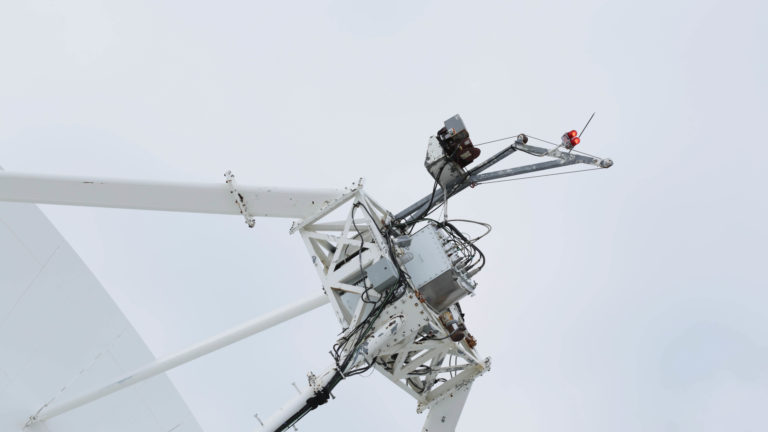
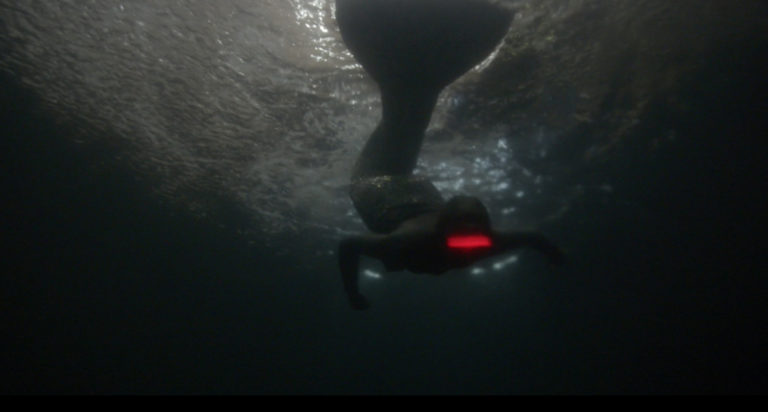
VU: This is a good moment to ask about your relationship with sound. There is a passage in your new monograph Sirenomelia, published by Sternberg Press, that is memorable, in which you discuss how to measure the ocean and its scale through sound. It struck me as essential that your work, despite being read as profoundly visual, can also be understood through this sonic component. For you, sound acts as another form of recording, right?
ES: Yeah. I’ve always been interested in what’s hidden from the eye, in what hides beneath. Also, in the expansion of our senses. Like the grandmother in Aldona, who lost her sight after Chernobyl disaster—that film foregrounds hearing and touch. It also relates to echo location, trying to take casts of the architecture of a city through or with the help of sound, with the echo bouncing as a way to build our understanding of space—or of the ocean, which is one of the darkest places on Earth. I’ve been researching marine observatories in the Mediterranean.
SC: This might be a stretch, but the idea of field recording makes me want to bring up the peripatetic nature of your practice. Not just the traveling and research-based process, which is often open-ended and super collaborative, but also how you reuse imagery and sounds across your filmography—in both short and feature-length films and in multichannel pieces. That sampling, I don’t know, it feels like another kind of energy transfer, to keep to our lexicon!
ES: Yeah. In that way, my approach to filmmaking, which is very related to sculpture and archaeology—archaeology of the past, archaeology of the future, and trying to collect these invented or hidden stories—hinges on the act of collaging. And material from previous films could be in dialogue with other, new materials depending on what the space and context prompt.
Now, in the South Tank at Tate Modern, I will try to do that, to work site-specifically with the architectural shape, which becomes a frame for the installation, a scaffolding that enables all of these stories to meet. I’ve been thinking about how we can define a space like a chamber or an observation station. The form, I think—it feels very material to me. It’s the pixel. Pixels are like clay or forms; they’re like piercing through us. They’re like atoms and neutrinos. And they fall on us like cosmic rays in different directions every time. The space is a tank that was once used for oil storage, and so it’s very relevant to the sites I’ve been filming.
VU: In this project for Tate Modern, called Eternal Return, you focus on the changing landscape of the ocean basin as a site. The location of the video-installation is meaningful: the Tate’s Tanks are in essence basins along the Thames river. As architectural spaces, they point towards their past as oil storage tanks. In this new video, you are looking into the ocean as both a very concrete, physical space, as well as a metaphorical surface; one that visibly bears the traces of extractivist activities (violent mining and drilling). This also explains why we chose to present Eternal Return in a defunct oil tank, which has now become the underbelly of the institution.
ES: Yes. Rewriting history into a scenario where another species—and other nonhuman beings—can be at home on this planet was of crucial importance. I was interested in giving evidence on how altered states of consciousness arise through sensing, and in and learning from new underwater plant formations that have shaped our history as humans in evolution. Observing the traces of the earliest life—the single-celled organisms in depths of oceans trying to have a tenuous grip on the reality of our changing planet.
And part of measuring these changes are through the body . . . there’s also going to be performance in this space. I’ve been using, as mentioned before, a lot of sound in my practice, both singing and readings. And often, they are two separate practices, music and film, but I want to try to intertwine them more and more. And I think that’s what’s going to be happening in the performance, and it’s related to what’s going on in the film—more scanning the depths of the ocean and seabed through echolocation and remote sensing.
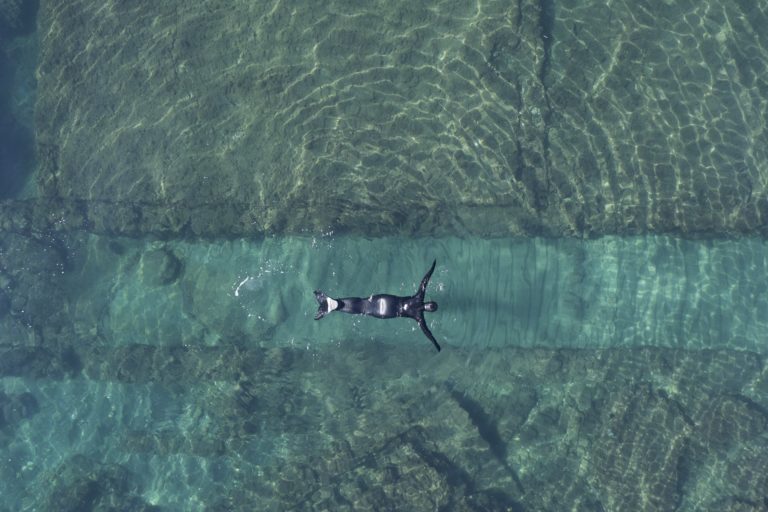
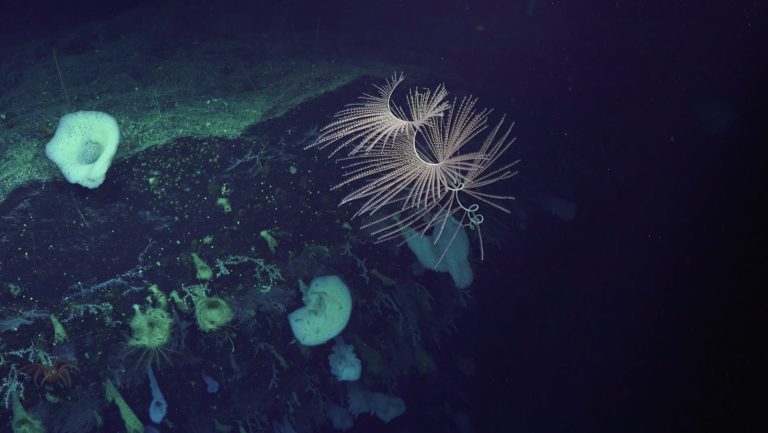
VU: On a different note, and continuing to think about your relationship with Aleksandra Kasuba, and others, I’m struck by the fact that certain people accompany you through the years, and through your artistic process. Maybe it is important to mention Tanya Busse here. As a duo, you formed New Mineral Collective. Could you talk a bit about the way you collaborate with other artists, scientists, and women, in particular, and the way collaboration informs your work.
ES: With Tanya, we have the New Mineral Collective, which we founded eight years ago, and that’s another long chapter in my practice. New Mineral Collective is a collaborative platform that looks at the contemporary landscape and tries to understand the extent of human interaction with the Earth’s surface. Along with a group of international members, we primarily focus on geo-traumas, radical geology and the carving of new spatial geographies due to extractive industries. We integrate many approaches to land use and attempt to emphasize multiple points of view regarding the utilization of terrestrial and geographic resources. This comes out in our performances, videos, sculptures and printed matter.
Among other long-term collaborations, and I’m very grateful for all of them, for sound design of the films I have been collaborating with Jokūbas Čižikas; for exhibition architecture, I’ve been mostly working with Linas Lapinskas, studying the space and feeling out which journey we’d like to represent, whether it’s resembling an Etruscan burial chamber, or a temple, or a church.
Yeah, so collaborations and constant dialogue, in person—not through emails—are extremely important to me. And though maybe not so directly visible in the work, but rather as a methodology, the dialogue is essential to each project. And maybe it feels most visible, I don’t know, in a more familiar way, in Aldona, because that, of course, is a personal dialogue. And then there is more distant dialogue, like with the nuclear power plant, with nuclear waste, but that’s still a dialogue. It’s been decommissioned and buried in my own country, in Lithuania. So collaborations and dialogues with local people, scientists and researchers are essential.

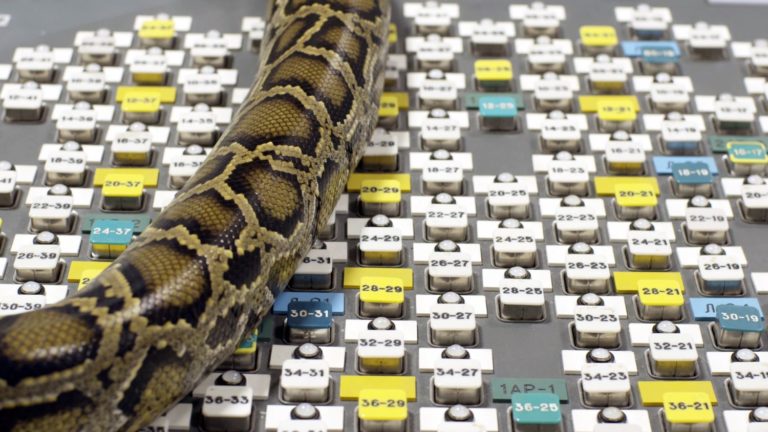
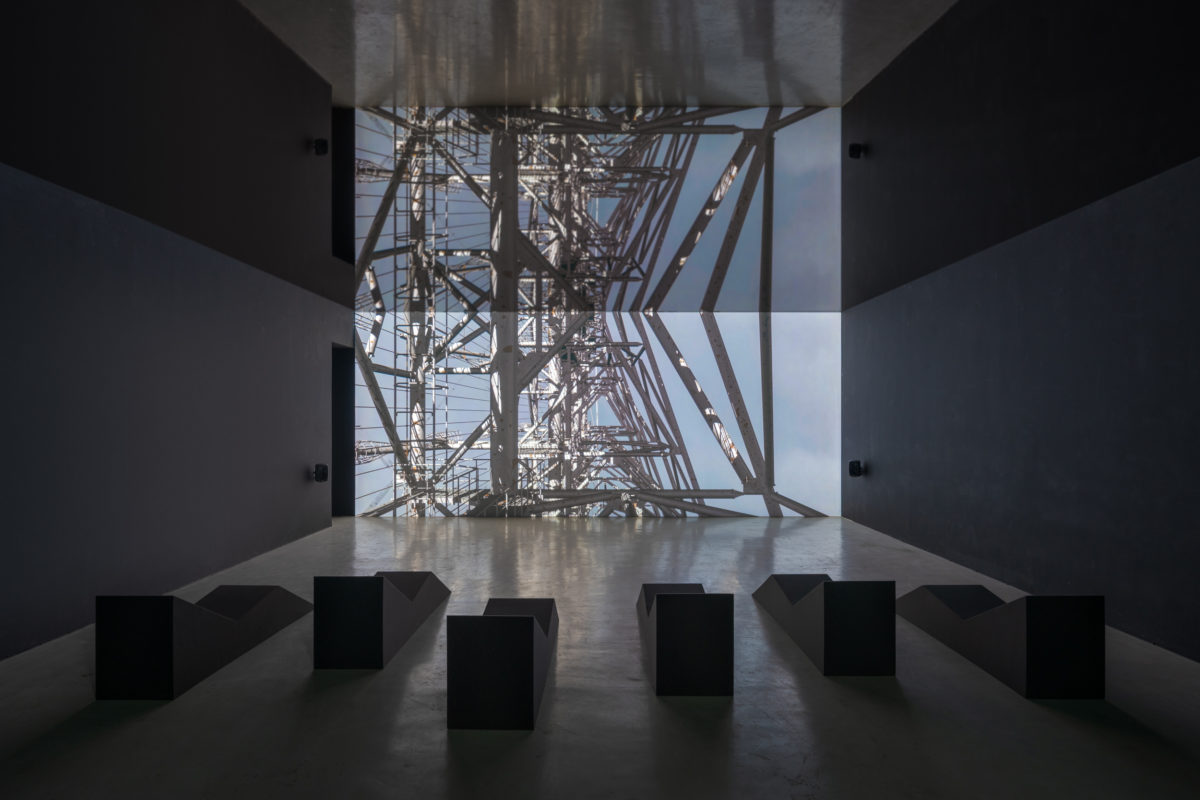
VU: Your new book Sirenomelia really reflects that. Each writer—Andrew Berardini, Roger Penrose, Nadim Samman, and Alison Sperling—brings a different perspective, from science to fiction to art criticism, and each text sprouts from a long-lasting dialogue with your practice, and yourself. All together, they sketch a transition from the mythical to pure math and physics.
SC: This discussion of collaborators makes me think of your relationship to the sites that you’re working in—those, too, are interlocutors. You have this aptitude for connecting geographies that maybe aren’t otherwise linked, across Lithuania and Mexico, and different kinds of histories . . . almost like a different kind of cartography, where different geographies have been reunited through your interest and through your engagement, kind of cutting through borders.
ES: Exactly. I think it’s about connecting things. I’m trying to look at things from the perspective of a future archaeologist, to reflect back—to land back on Earth and to observe it—and seeing that there are borders that could have been shifted already. Hunting for a lost and decaying deep time, observing human left scars on Earth’s strata is somewhat an obsession of mine.
So I’m trying to connect these mythologies or disasters in some kind of network or dialogue. Working with universal topics, I need to think through them across different locations. In the series of my films, I observe man-made places that become monuments: submarine bases, particle accelerators, neutrino observatories, mining sites. And also, this wide-ranging practice exploring landscapes of extraction, looking for a different set of values in the Earth’s mineral core is important for the New Mineral Collective.
SC: A final thought—there is something that could be considered dystopian about your work, which often talks about the ruins of the past and the scars that we leave, especially at the bottom of the ocean. But your work doesn’t feel pessimistic. And there is this expression that comes up often when you describe the work with New Mineral Collective, which I love—the “erotics of counter-prospecting.” But I think there is something that is very positive and invigorating as well, that contradicts what is maybe pessimism, or that is a way you found to respond to the processes of extraction, of mining, which can be very violent. I’m quite interested in that.
ES: That’s our proposal—geo-trauma-healing therapies that we would like to provide. We would like to bring in alternative forces, energies, and values into the land, into the world, really, such as pleasure, desire, poetry, instead of continuously extracting from it. There should collectively be an understanding of the necessity to preserve those plots of land – this is an attempt to turn the whole logic of extraction and its seemingly unstoppable pace on its head.

